And the year is 2020. We’ve been hit by the global pandemic and suddenly we had to move all our teaching online. We have been running against the clock to provide a better experience for students. I’ve attended so many zoom calls and meetings to collect insights to improve our teaching practice that I lost count. Here I’ve tried to post some notes that might be useful for some educators.
I’ve collated these notes from a webinar attended on 26th March 2020, hosted by Cambridge Education Group. Please feel free to share this resource with your team! I will try to update as much as I can, but at the moment, we are all learning together. So apologies if this is not new for you anymore! :)
Notes on online teaching
We need to try to keep the learners engaged and move from a content development perspective to a facilitator role.
Since we are now moving towards asynchronous teaching, we need to engage with students on perhaps having small activities where we can work as facilitators together. There is a lot of room for collaboration, however we are testing all these possibilities together and it is important to let our students know this as well.
We need to provide an environment for co-creative learning environments and provide new ideas for the practice. It is also a learning opportunity for us tutors and learners on our professional development.
The development and transition of a course is also a challenge that we are all living. As an online teacher we need to adapt to the technology, to students and a new way of working. We don’t have the advantage of body communication and we are often relying on text, voice and video. Thus, it is important that we get to know the students to understand how best we communicate with them.
Other things to consider is that we are working with our colleagues, and there is no “coffee room” to discuss; thus, we need to work together without having these facilities.
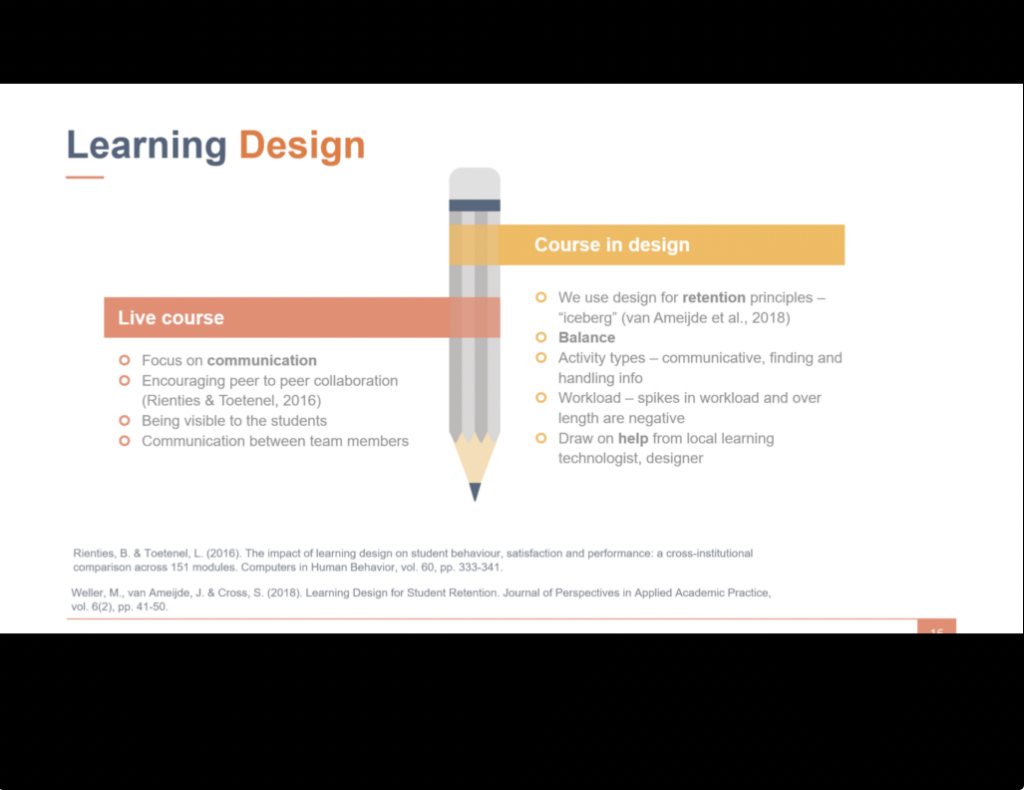
Notes on online assessment
We need to be transparent. Thus, students need to understand how the assessment criteria is embedded in the assessment. They need to have access to this information. Perhaps students can get involved in these discussions in order to understand their comprehension on the assessment.
Scaffolding the tasks is also important. We could explore the steps that they need to get for the assessment.
Developing activities for students to communicate and peer-feedback is also important and communication. On the scaffolding tasks, working on word clouds and mind mapping could be extremely useful. They need to get used to what an online community of learning is. When students understand the criteria they can also self-assess.
Reflections need to take place. By having learning journals can also be a great opportunity. This also allows to make experiential links with the content. They need to start reflecting on their learning experience in this specific context. We need to create spaces for students to do that. by having a wider range of assessment tasks that reflect these criteria, it would be great that they could experience social platforms, forums, blogs, mind mapping, etc. Patchwork assessment could be another way of doing this. By doing this, we can also look at the learning engagement and avoid any opportunity for plagiarism and collusion.
There are also online alternatives for face-to-face assessment (see image below).
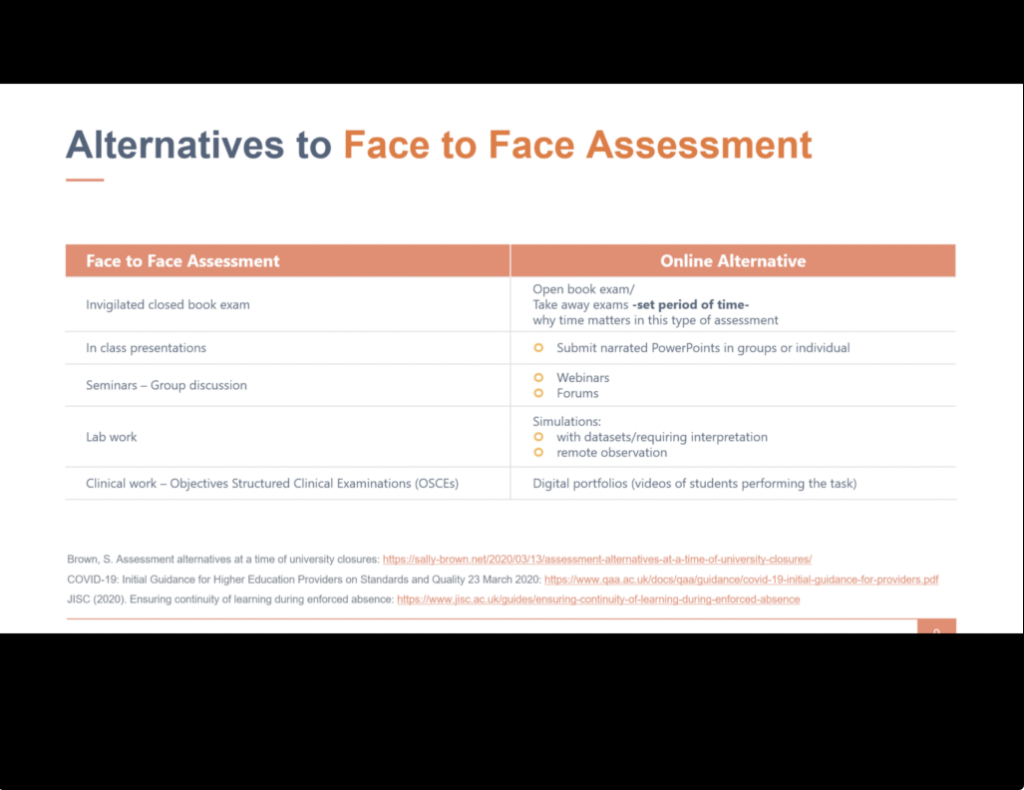
Notes on student support
Five areas need to be considered: provide solutions during peak times of need, connect to University services, deter the feeling of isolation, do engagement checks and provide a support platform.
Because students have not had experience with the new platform, it is important to let them know the things they need to know today so they can succeed in the course. Making guides could be also a good way of doing this.
In order to provide solutions during peak times of need, we can try to anticipate times that they will have these question and be creative on answering queries. We could identify dates, send our announcements.
When students are in campus, they can easily pop in at our office, so we need to make sure that students know what kind of support they have. Have contact details ready to send to them.
It is good to keep contact with students, so send them announcements and have a quick response time (if you can).
Have “engagement” checks, with messages and send them any type of communication to see if they need any extra support. Examples of opportunities in the image below. I suggest you don’t over do it.
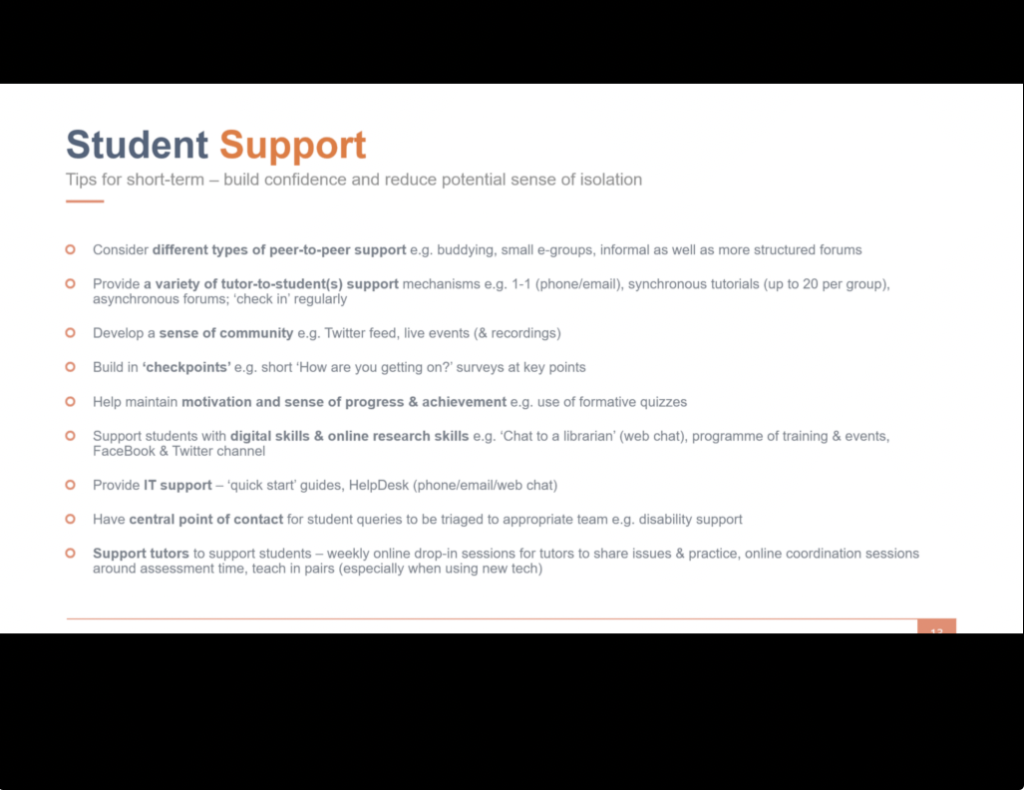
Also it is important to manage expectations, from communication with tutors and the amount of work. Sometimes it can be a lot of things for students to consider. Students might feel out of control.
The codesignframework and structure (suggested in the webinar)
Use different learning types and spread around the topics. So 70% of the course should be focused on practice, production and enquiry and just 10% and 20% on acquisition and discussion. By the end a webinar is taken in place. We can use a similar approach from this framework, which is work looking at.
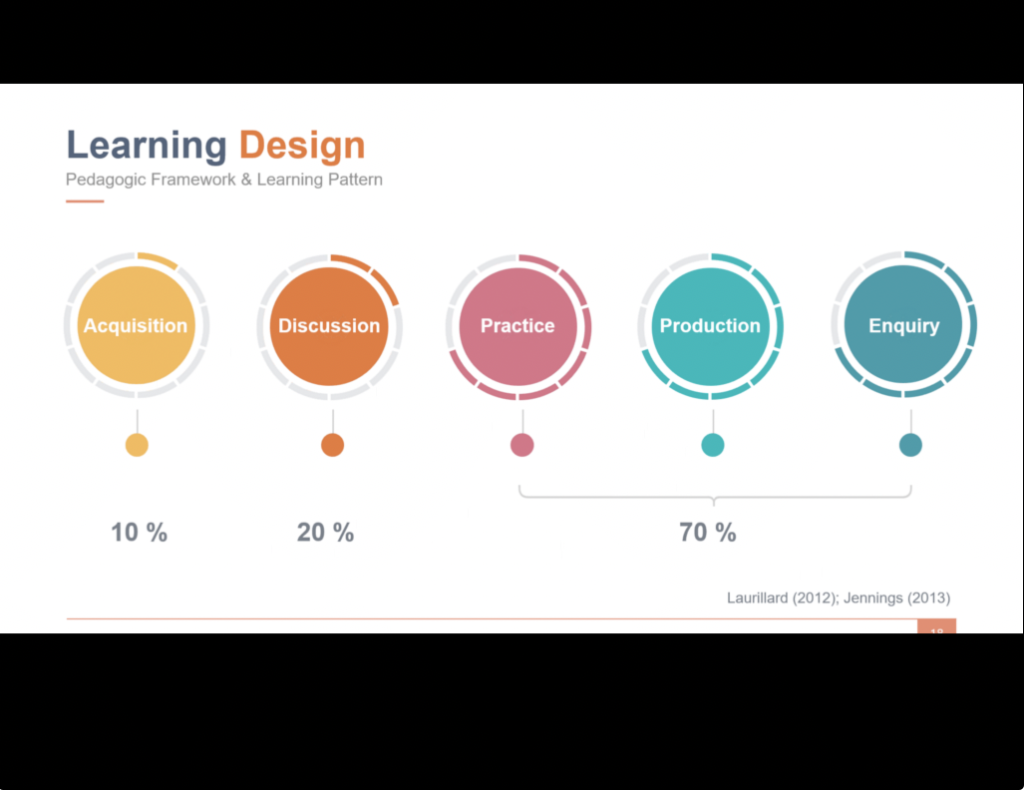
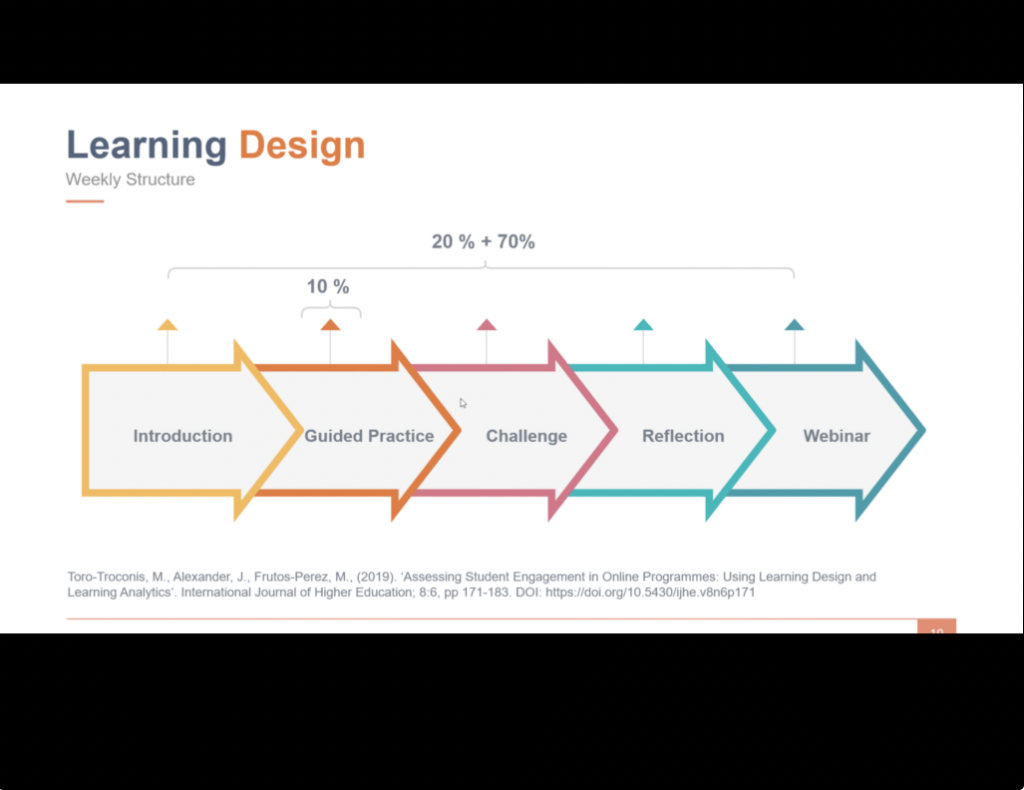
In overall, there are a lot of challenges to consider and we are all learning how to do this together. So we need to share the strategies we have been using.
Still, some questions remain: how can we make active learning in this scenario? How can we use any online tools for this specific context? How can we make learning inclusive in this new environment?
Within the webinar, some tutors mentioned that students could engage in the conversation by grabbing something from their context and bringing it to the learning environment. So fun was also mentioned in the conversation and breaking the “ice” and building confidence. This would be great because we are still choosing which tools and apps to use (there are many out there!).
We can also break tasks down and use different types of tools: podcasts, blogs, etc.; and not just a 2h lecture video. I really wish we could get a list of these! :)
Some points worth mentioning here are related to engagement. Gamification was also mentioned in the Q/A session. I think that there is still some scope for that. By looking at the analytics, it can be possible to measure some aspect of engagement (however numbers don’t just represent engagement levels!).
Let’s continue sharing our experiences. We can all do it together. And you, do you have any best practices or experiences to share? Leave a comment!